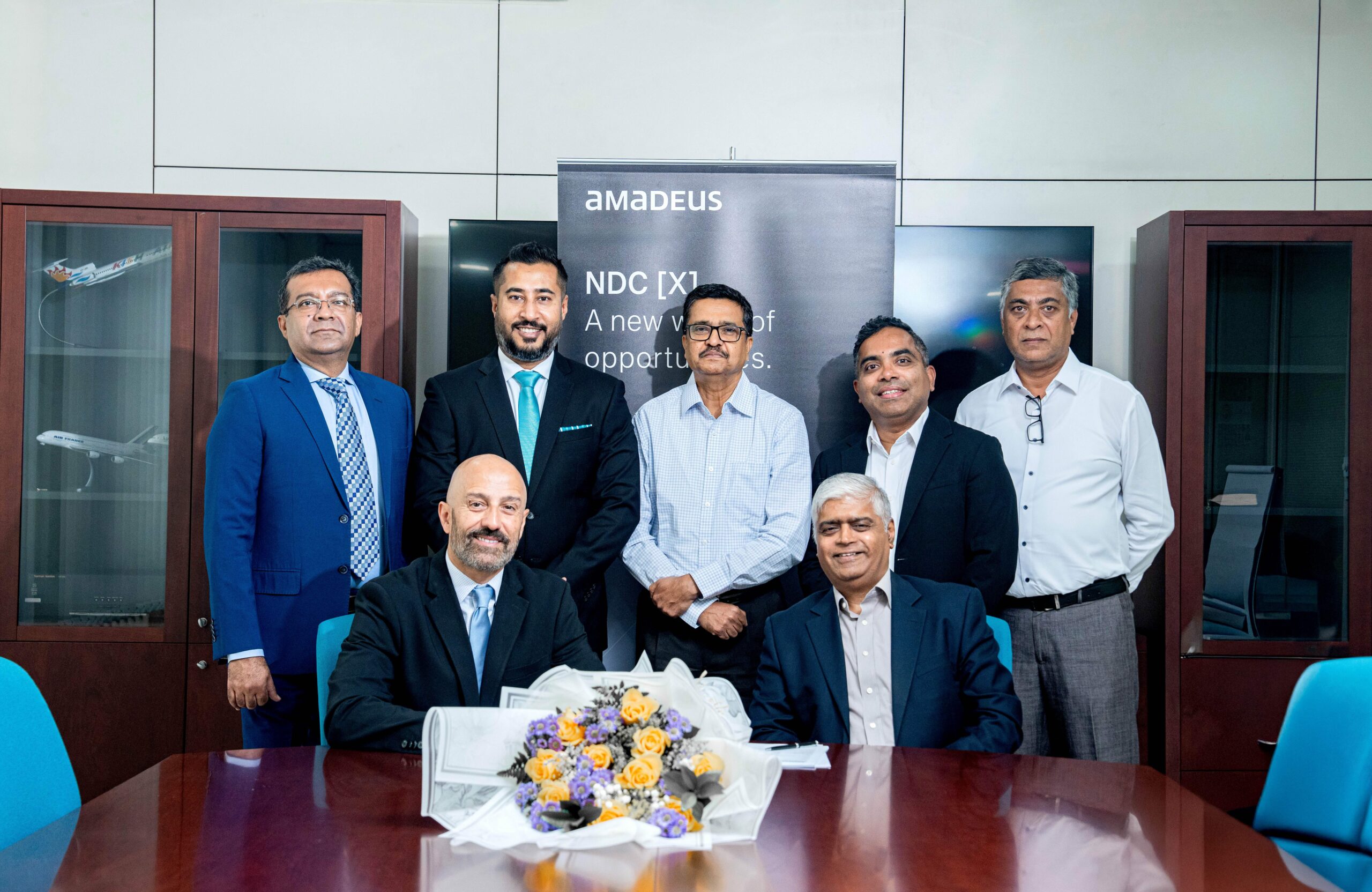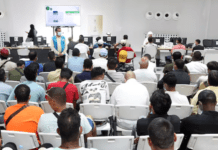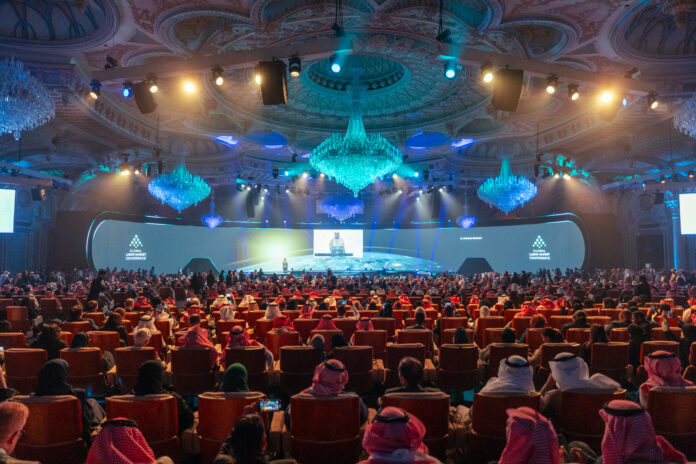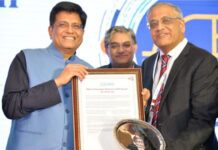The Global Labor Charter promotes inclusive, adaptable labor markets, while the GLMC Labor Academy aims to foster global knowledge exchange.
By Anthon Garcia
The Global Labor Market Conference (GLMC), a premier gathering dedicated to shaping the workforce landscape, returned for its second edition on January 29 and 30 at the King Abdulaziz International Convention Center in the Saudi capital of Riyadh.
Held in collaboration with the International Labor Organization (ILO), the World Bank, and the UNDP, GLMC was under the patronage of His Majesty King Salman bin Abdulaziz Al Saud. This year’s installment built on the success of the inaugural 2023 edition, introducing six new thematic pillars around which discussions revolved. These include Forever Skilling, The Win-Win of a Mobile Workforce, Youth in a Bind, Productivity on the Mend, Growing Green Jobs for a Just Economy, and SMEs and New Work Models as Job Creators.
The event was attended by key labor market stakeholders, including government officials, policymakers, business leaders, and academics.
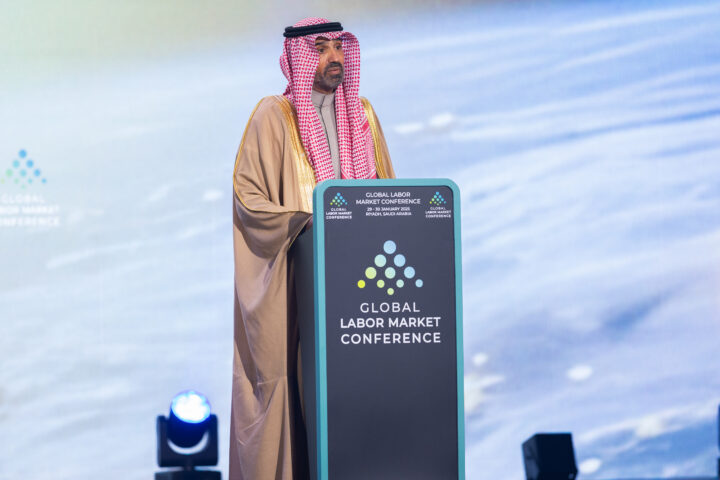
Ministerial roundtable
GLMC 2025 commenced with a pivotal ministerial roundtable. Chaired by H.E. Eng. Ahmad bin Sulaiman AlRajhi, Minister of Human Resources and Social Development in the Kingdom of Saudi Arabia, the roundtable convened more than 40 labor ministers from across the globe alongside ILO Director General Gilbert Houngbo.
“This session provided a valuable platform for global leaders to engage in insightful discussions on youth employment and the challenges facing worldwide labor markets. Our dialogue covered crucial topics such as the gap between the supply and demand for skills, demographic shifts, and the green economy,” AlRajhi noted.
Underscoring the issue of unemployment, he further said, “On a global scale, 67 million young people are unemployed, and millions more struggle to access quality employment due to structural barriers. This issue is not merely economic — it has profound social implications that require urgent and comprehensive solutions.”
In his speech, AlRajhi shared how Saudi Arabia addresses labor market issues. The country’s Vision 2030 includes objectives such as reducing unemployment rates, especially among youth, increasing female participation in the labor market, and enhancing continuous education and skills development programs.
The minister remarked, “These initiatives reflect our dedication to ensuring that young people have the knowledge and expertise to contribute meaningfully to the workforce and drive national and global progress.”
Global Labor Charter unveiled
On the first day of this year’s GLMC, several key announcements and discussions took place.
A notable highlight is the Global Labor Charter, which provides a vision to improve labor markets around the world — in terms of sustainability, inclusivity, and flexibility. The charter also identifies key challenges in the market, ranging from youth unemployment to workforce adaptability. To address this, the charter has outlined strategies like helping youth transition from education to employment. It also underscored the need to reskill and prepare the workforce for an AI-driven era.
The Global Labor Charter also noted that the labor market must be more inclusive, catering to people with disabilities and those who have been unemployed for a long time. To further promote flexibility in the workplace, the charter also promoted diverse work setups like part-time and remote work opportunities.
On top of these, the charter also focused on supporting job creation and the growth of small and medium-sized enterprises (SMEs).
Currently, about 20 percent of young people (15 to 24 years old) are neither working nor enrolled in education or training. Meanwhile, around 40 percent of employers struggle to fill jobs due to skill mismatches.
In Saudi Arabia, initiatives like the National Youth Development Strategy launch, and the Cooperative Training Policy are generating positive results.
For instance, the Saudi private sector workforce has surpassed 12 million in 2024, with the number of Saudis employed in the sector reaching 2.4 million. Additionally, over 700,000 jobs have been created for Saudis, driven by training programs and other initiatives. As a result, the unemployment rate dropped to 3.7 percent by the end of last year. This figure is a substantial decrease from 5.7 percent in 2020. Meanwhile, female labor force participation rose to 36 percent, a statistic that surpasses the Vision 2030 targets.
Key partnerships
During the first day of GLMC 2025, GLMC and the World Bank also announced that they entered into a new three-year partnership.
As part of this collaboration, they have unveiled the GLMC Labor Academy. Also in partnership with Takamol Holding, the three-year program will cater to international labor market experts and equip them with skills essential for shaping future policies. The academy will also serve as a platform for fostering knowledge exchange among middle- and low-income countries. The GLMC Labor Market Academy will also offer policymakers a unique opportunity for professional growth through access to World Bank expertise, GLMC’s knowledge base, and a global network.
Apart from the academy, the partnership will also cover the GLMC-World Bank Policy Labs, a dedicated platform for in-depth discussions on policies, instruments, and programs that enhance labor market outcomes and skills development.
“We are proud of the long-standing collaboration between the GLMC and the World Bank. Today, we are taking our partnership to a new level by jointly fostering knowledge exchange and sharing best practices with the global community. As we gather for the Second Edition of the GLMC, and look forward to many more to come, we share a mission that aims to advance innovative initiatives and comprehensive strategies to address the extraordinary shifts in the nature of work,” Safaa El Tayeb El-Kogali, World Bank country director for GCC countries, shared.
GLMC and the World Bank are expected to unveil a new paper titled Making Labor Markets Work for the Youth. It will explore the socio-economic impact of youth inactivity and outline a framework for prioritizing interventions to enhance youth employment outcomes.
On job mismatches, AI, and the future of labor market
Day 1 of GLMC 2025 also hosted insightful keynotes and panel discussions.
In the session, Light at the End of the Tunnel? Labor Market Mismatches and Skills Gaps, the spotlight was on aligning workforce skills with the evolving demands of today’s and tomorrow’s economy. The panel — which included Dr. Badr Al Badr, CEO at Misk Foundation; Dr. Evan Shellshear, managing director at Ubidy; and Stefano Scarpetta, director for Employment, Labor and Social Affairs (ELS) Directorate at OECD — discussed the causes of employment mismatches and tackled solutions like targeted education and upskilling.
In the session called Reality Check: AI and the Global Labor Market, Dr. Andy Xie, an independent economist, talked about how AI is reshaping the global labor market and how businesses and governments can prepare for an AI-driven labor landscape.
Another notable session was the discussion of a recent GLMC Research Study, Navigating Tomorrow: Mastering Skills in a Dynamic Global Labor Market. The speakers included Dr. Ahmed A. Alzahrani, deputy minister for Skills and Training, Ministry of Human Resources and Social Development, Saudi Arabia; Johannes Koettl, senior economist, Social Protection and Labor Global Practice – World Bank Group; Dr. Séamus McGuinness, research professor at ESRI Dublin and adjunct research professor at the Department of Economics – Trinity College; and Dublin Roberto Suarez Santos, secretary general at the International Organization of Employers.
According to the study, the respondents strongly favored personal, alternative training, with online courses and on-the-job training being the most popular methods. Self-learning was especially prevalent among older, high-income, and high-skilled workers. Meanwhile, employers prioritized enhancing existing employees’ skills over hiring externally.
The research also showed that the biggest barriers to training were time and financial constraints, while misaligned education systems and poor coordination between government, businesses, and unions were secondary concerns. Many viewed education and training systems as inadequate in adapting to evolving skill needs, especially younger individuals and university-educated respondents. Dissatisfaction was highest in China, India, and Vietnam, while the UK and Australia had the lowest dissatisfaction levels.
Businesses were seen as the most reliable supporters of upskilling, whereas governments and unions were the least trusted. Only in Saudi Arabia (35 percent) and India (31 percent) did governments receive significant trust.
With all these discussions, conferences like GLMC prove to be vital in fostering collaboration among stakeholders, addressing skill gaps, and shaping effective policies for the future workforce.
“As we move forward, I urge all participants to maintain the momentum of this conference and reaffirm the importance of continuous cooperation. The challenges of employment, particularly youth employment, require sustained efforts, adaptability, and strategic partnerships. Through collective action and shared commitment, we can build stronger, more inclusive economies that ensure a brighter future for young generations worldwide,” AlRajhi enthused.

